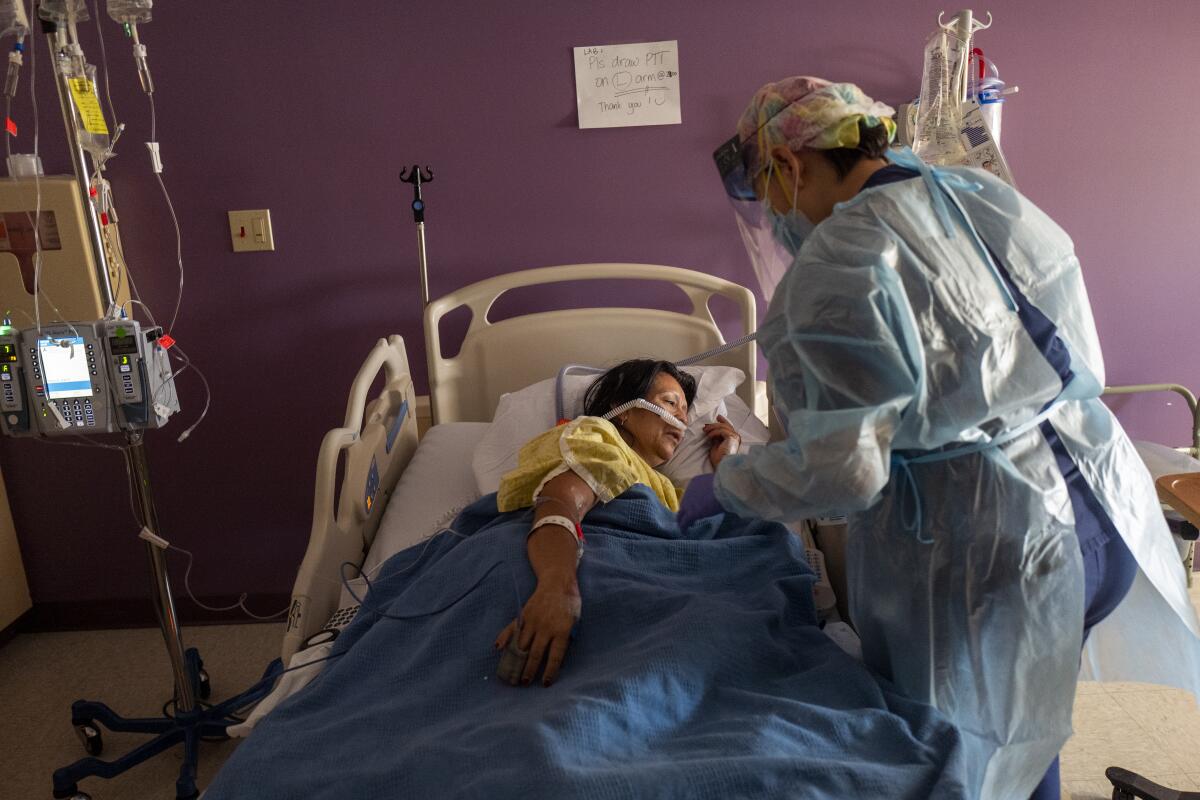Editorial: Officials have been relaxing some COVID protocols, leaving the public dazed and confused

Even as COVID-19 cases spiked last month, the U.S. Centers for Disease Control and Prevention cut in half the amount of time that people should remain in isolation after infection if they are without symptoms — and eliminated the recommendation that they get a negative test before they start interacting with other people. The change caused an outcry among many scientific experts who thought it was reckless.
Just a week earlier, the CDC reduced the amount of time that healthcare workers were advised to stay off the job after a coronavirus infection if they tested negative and were symptom-free.
And last weekend, the California Department of Public Health issued another change, saying it was OK for infected healthcare employees to work as long as they were asymptomatic, including nurses who are at the front lines of patient care. Those workers are supposed to be limited to caring for patients with COVID-19, but state health officials acknowledged that this arrangement wouldn’t always be realistic. Some hospitals in Rhode Island and Arizona are adopting similar protocols.
Meanwhile, parents of California’s public school students are receiving multiple notifications that their children have been exposed to COVID-19 at school, but most simply don’t know how they should react. Should the child be tested right away? Should the rest of the family keep their distance until symptoms have had a chance to show up?
We’re told that our old loose-fitting cloth masks are inadequate to protect us from the Omicron variant, but entering a store wearing a gauzy bandana across the lower face is still allowed. Home COVID-19 tests are supposed to be our new weapons against spreading the disease, but we’re mostly on our own when it comes to getting them, if you can find them at all.
Omicron passes from person to person with terrifying speed and yet the public may be more confused now than at any time in the last year about how to prevent a COVID-19 infection — or what vaccinated people can reasonably do to protect themselves.
New circumstances often call for changing guidelines, of course, but with Omicron, the overall message about COVID-19 has grown more contradictory and muddled.
The shifting protocols may make sense, given all the factors public health officials need to balance. It could be that the danger of not having enough hospital workers is greater than the danger of having infected employees on the job. The costs to our economy and the inability to get needed products and services might outweigh the risks of ending quarantines earlier and without negative tests.
What does not make sense is leaving the public in a zone of utter uncertainty about this stage of the pandemic, what the game plan is, why the rules are changing and how we’re supposed to react to all this.
Some scientists argue that we don’t need to be as fretful about Omicron as we were about the earlier variants. Vaccines appear to be doing an excellent job of keeping people from becoming seriously ill from a variant that appears to be milder. Maybe we’re turning a corner toward a future where COVID-19 will be less of a threat for most people — though we are still far from that point.
Despite pandemic fatigue, the majority of Americans have shown that they can step up during rough times and deal with an ever-changing landscape. But to do that, they need to know what’s going on. It’s about time officials put their communication skills together and told us clearly.
More to Read
A cure for the common opinion
Get thought-provoking perspectives with our weekly newsletter.
You may occasionally receive promotional content from the Los Angeles Times.










